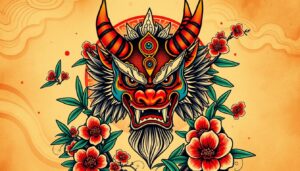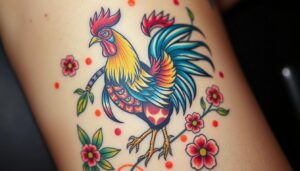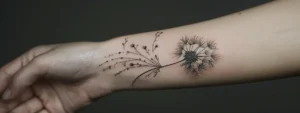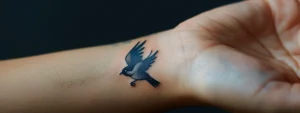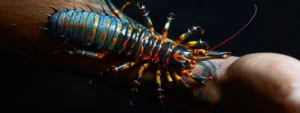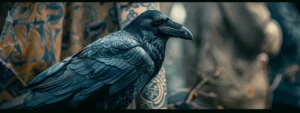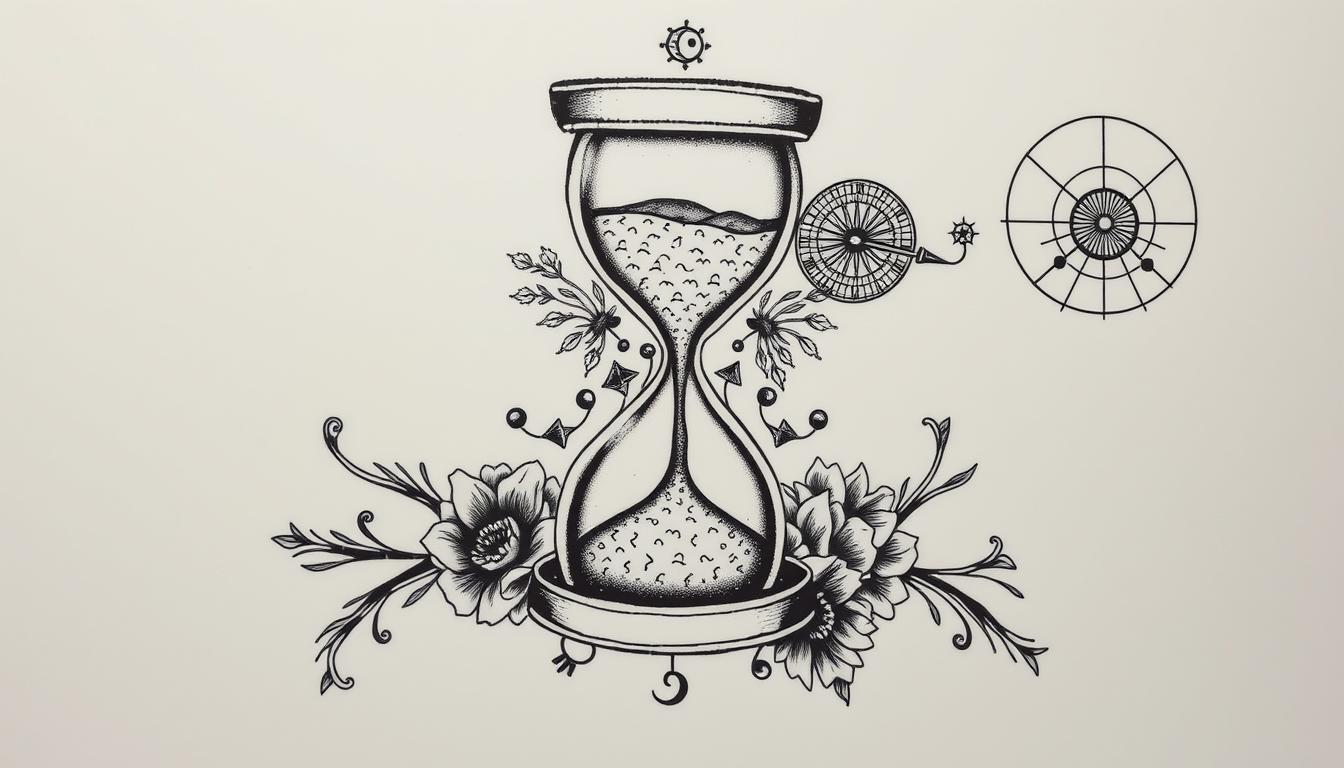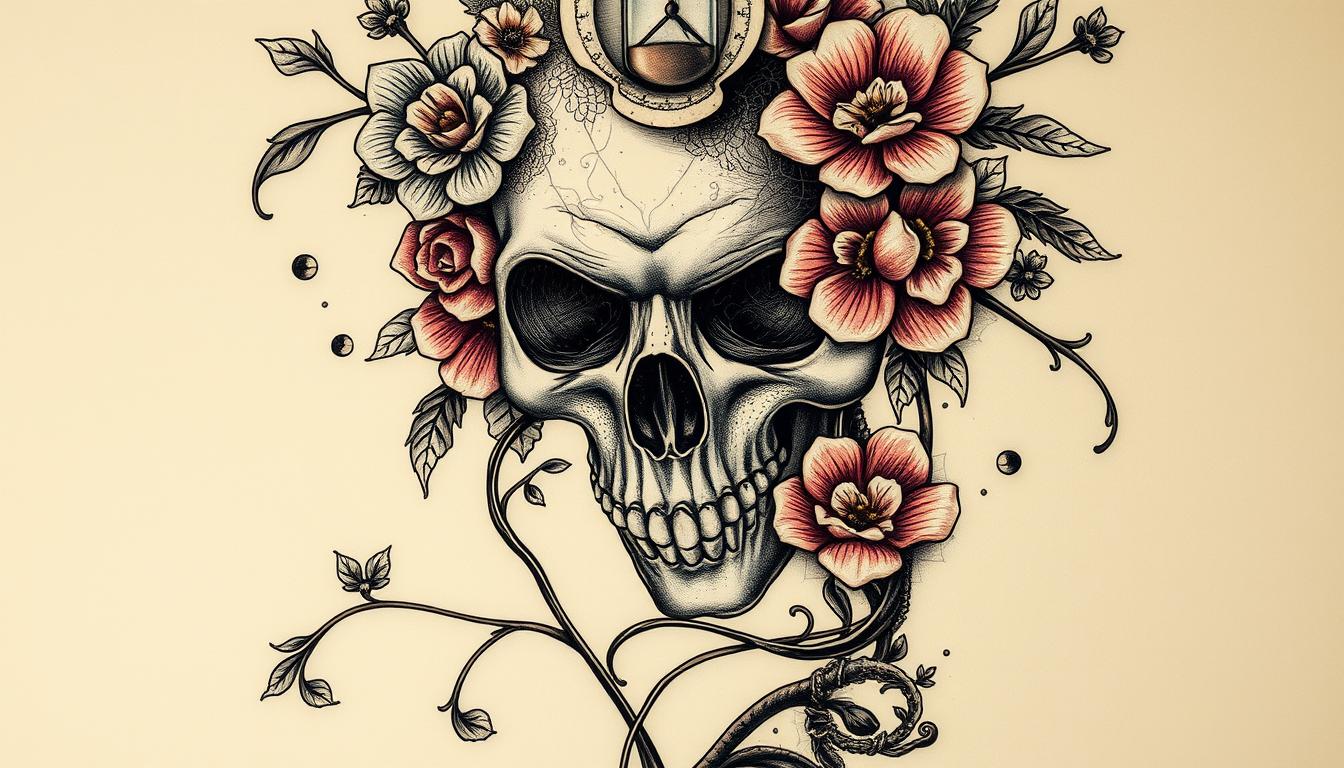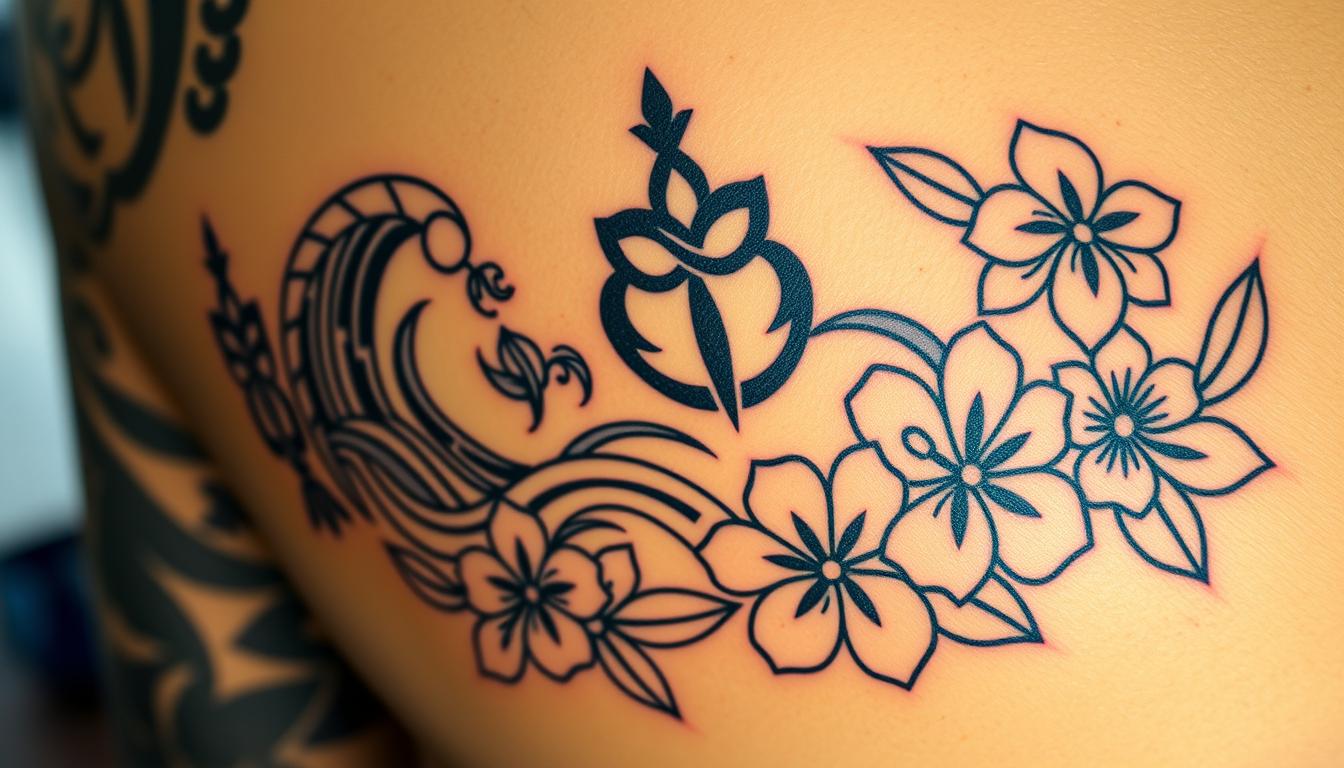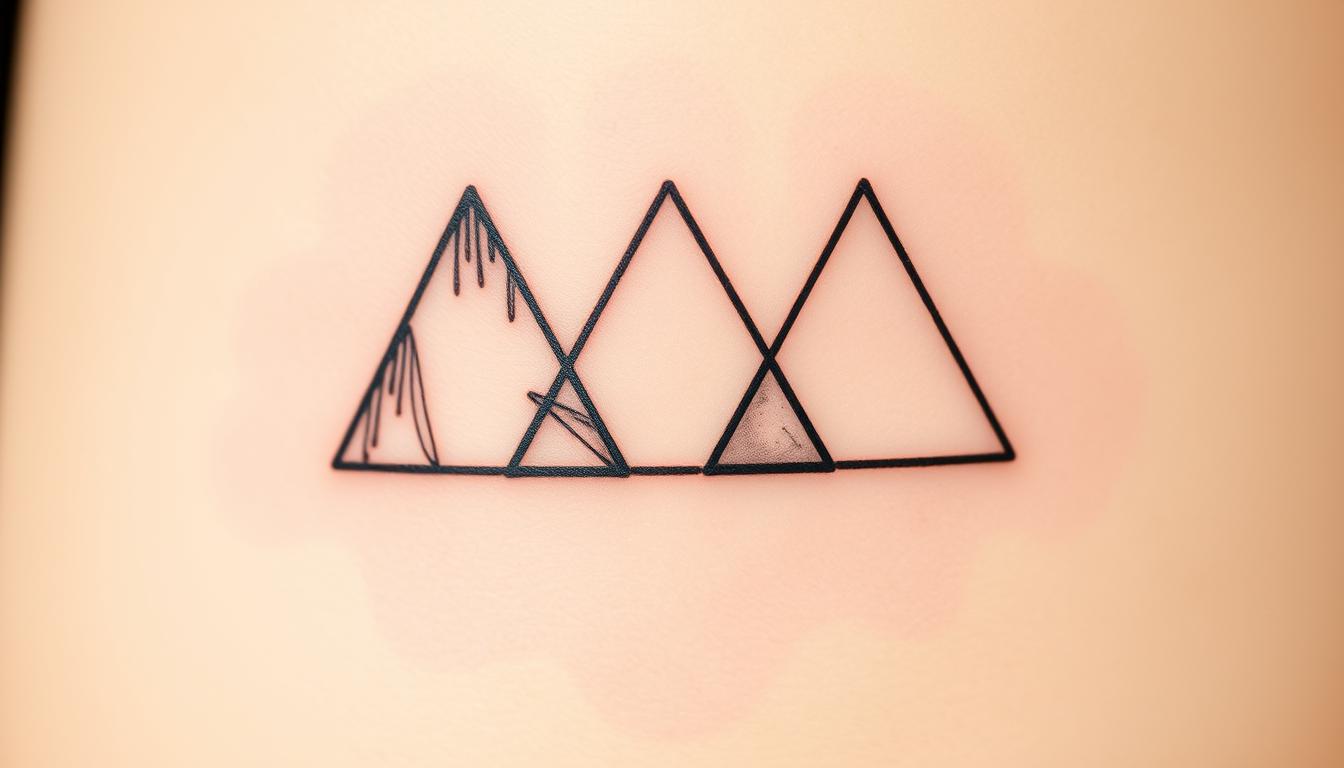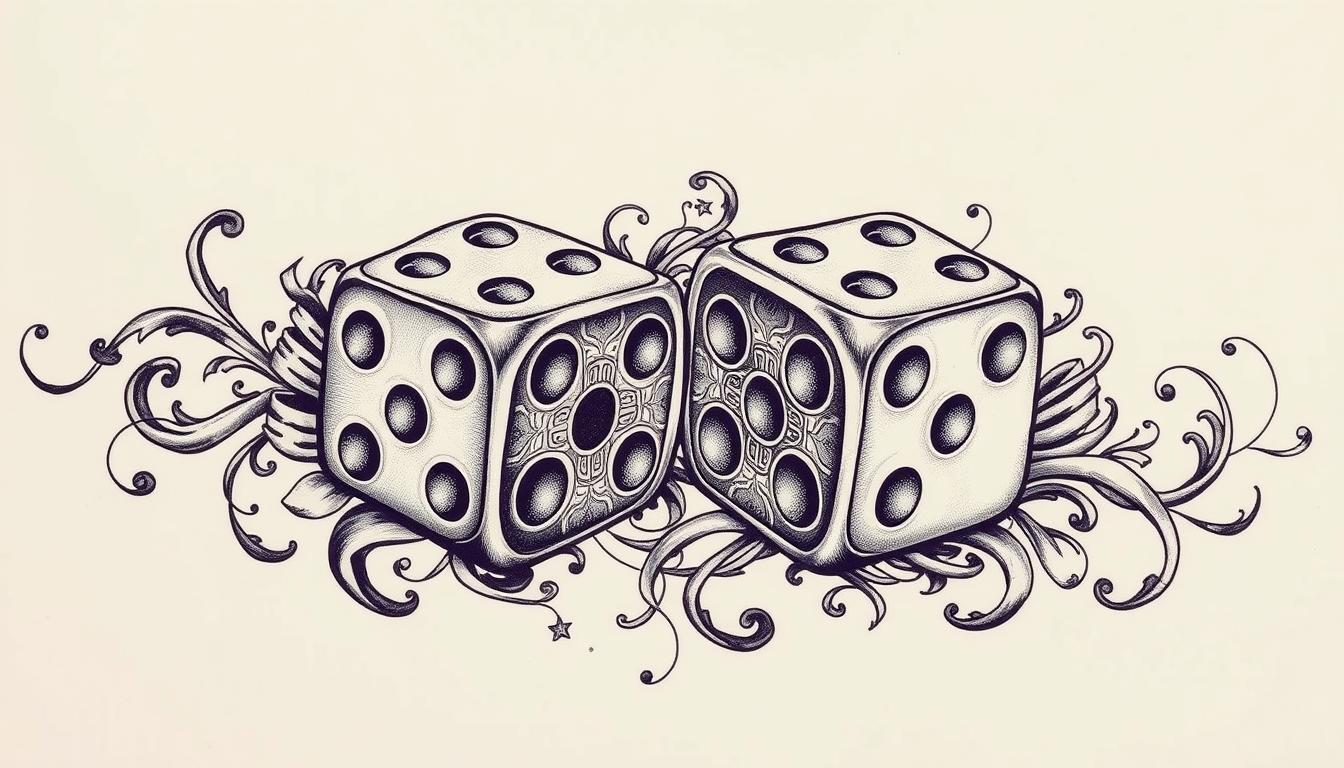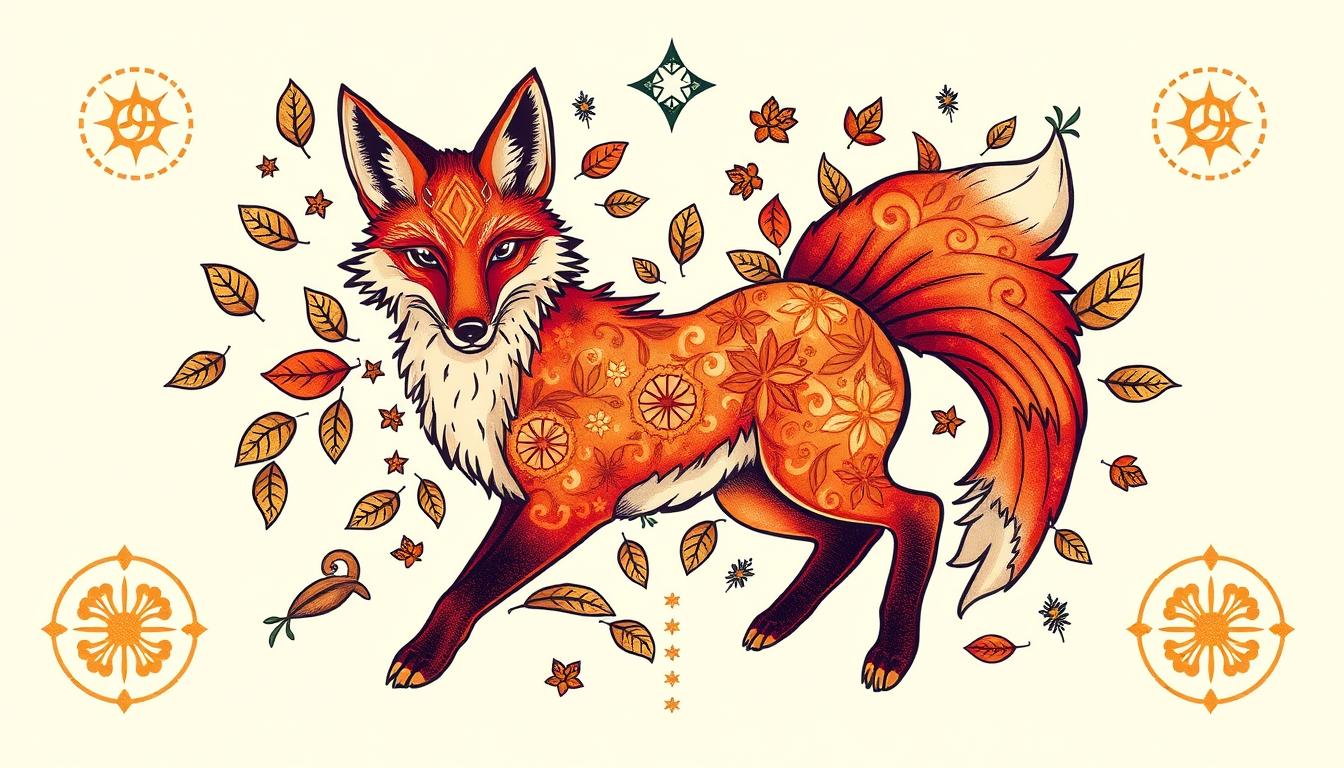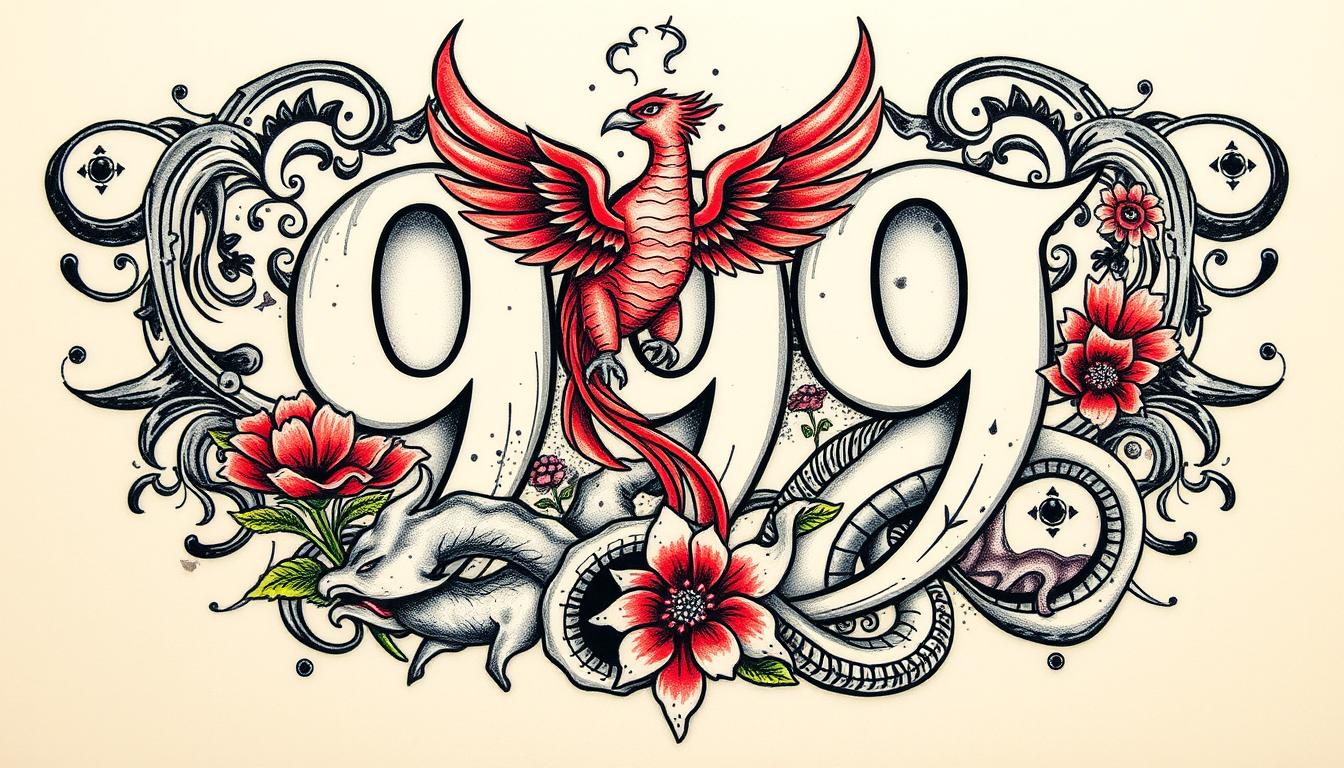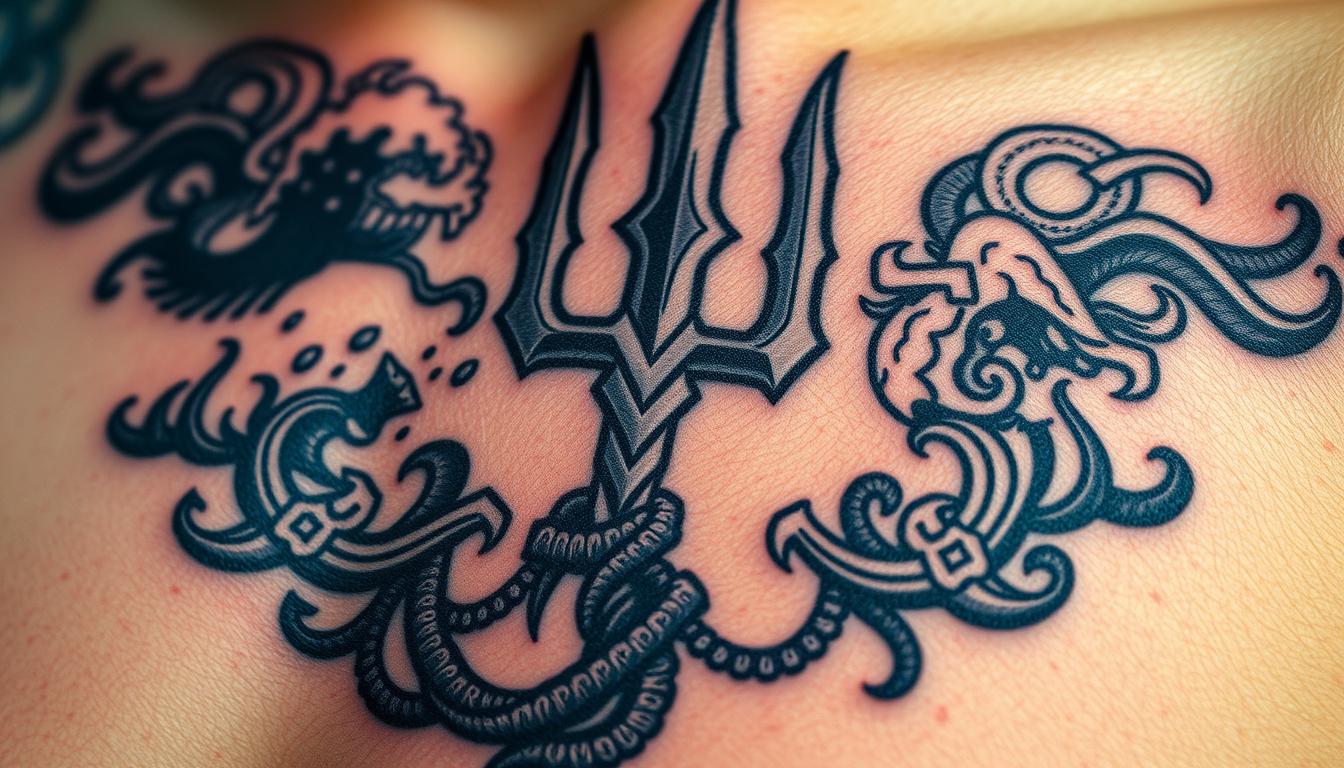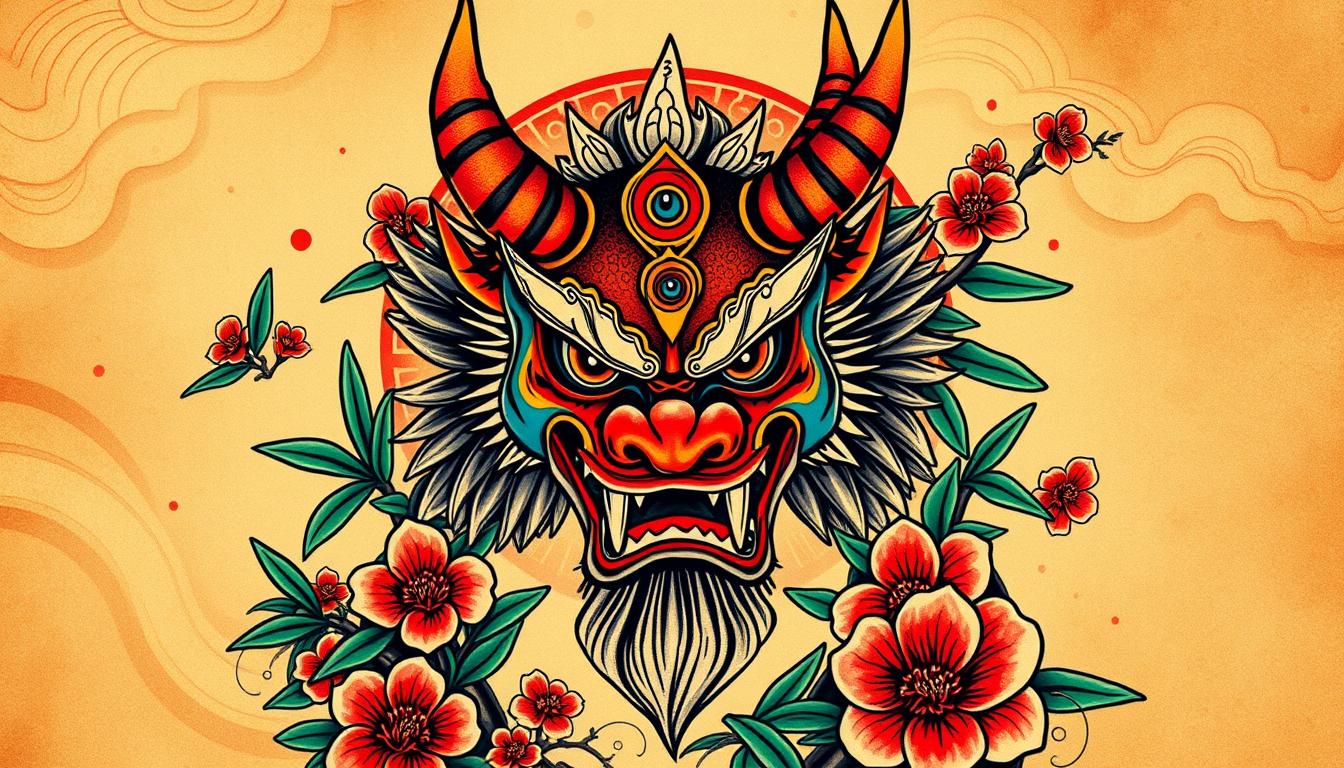Snake tattoos have captivated people for centuries, but what do they really mean? This article explores the rich symbolism behind snake tattoos, from their historical roots to modern interpretations. We’ll delve into the cultural significance of snakes worldwide and examine common meanings associated with these designs. Whether you’re considering a snake tattoo or simply curious about their symbolism, this guide will provide valuable insights into the art, beauty, and divinity represented by these intricate designs. By understanding the deeper meanings behind snake tattoos, you’ll be better equipped to choose a design that resonates with you or appreciate the artistry of your tattoo artist.
Key Takeaways
- Snake tattoos symbolize transformation, wisdom, and duality across various cultures and time periods
- Proper aftercare and periodic touch-ups are crucial for maintaining the quality of snake tattoos
- Snake tattoo designs can be personalized through species selection, placement, color choices, and individual elements
- The symbolism of snake tattoos varies widely, influenced by mythology, religion, and cultural perspectives
- Snake tattoos often represent the balance between life and death, good and evil, and danger and protection
The Historical Roots of Snake Tattoos
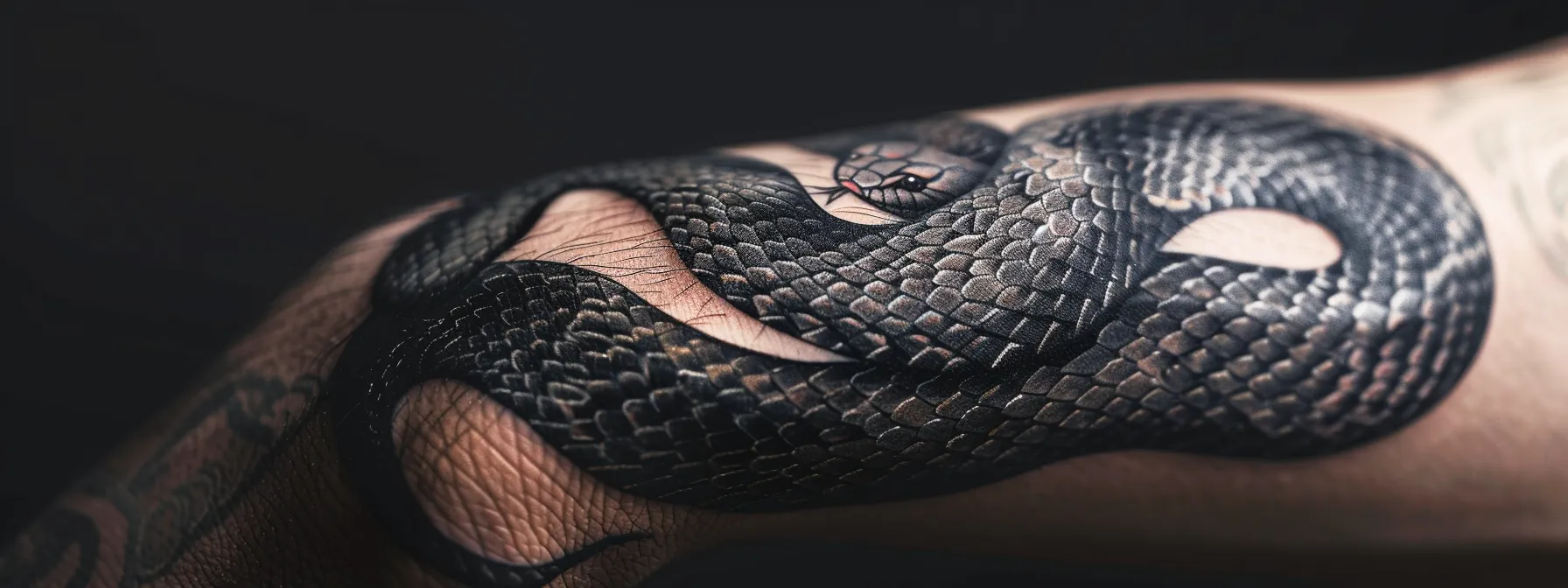
Snake tattoos have deep historical roots, tracing back to ancient civilizations where serpents symbolized fertility and rebirth. The ouroboros, a circular snake symbol, evolved through time, representing eternity in various cultures. Mythological influences shaped snake tattoo meanings, often depicting power and wisdom. These designs, commonly inked on the arm, continue to captivate tattoo enthusiasts worldwide.
Ancient Civilizations and Snake Imagery
Ancient civilizations revered snakes as powerful symbols in their cultures. In Egypt, the serpent represented wisdom and protection, while in Greek mythology, the Rod of Asclepius, a snake-entwined staff, symbolized healing and medicine. These early associations with nature, luck, and divine wisdom laid the foundation for snake imagery in tattoo art. The following elements were commonly associated with snakes in ancient cultures:
- Fertility and rebirth
- Eternity and cyclical nature
- Divine wisdom and knowledge
- Protection and healing
- Transformation and renewal
Evolution of Snake Symbolism Through Time
The symbolism of snake tattoos evolved significantly through time, reflecting changing cultural perspectives. In ancient Egypt, snakes represented divine wisdom and protection, while Greek mythology associated them with healing and transformation. As civilizations progressed, the meaning of snake tattoos shifted, incorporating elements of rebellion, sexuality, and personal growth. Today, the question “What does a snake tattoo mean?” often yields diverse answers, with interpretations varying based on cultural background and individual experiences. The evolution of snake symbolism in tattoo art can be summarized as follows:
| Time Period | Cultural Context | Symbolic Meaning |
|---|---|---|
| Ancient Egypt | Religious and Mythological | Divine wisdom, protection |
| Greek Mythology | Medical and Philosophical | Healing, transformation |
| Modern Era | Personal and Social | Rebellion, sexuality, growth |
Influences of Mythology on Snake Tattoo Meanings
Mythology significantly influenced snake tattoo meanings, infusing them with rich symbolism. Greek mythology’s Medusa, with her serpentine hair, became a powerful symbol of feminine strength and protection. In various cultures, snakes represented wisdom and knowledge, often associated with forbidden or secret information. Prison tattoos adopted snake imagery, symbolizing cunning and adaptability. These mythological influences shaped the diverse interpretations of snake tattoos, as shown in the following table:
| Mythological Figure | Cultural Origin | Symbolic Meaning |
|---|---|---|
| Medusa | Greek | Feminine power, protection |
| Quetzalcoatl | Aztec | Wisdom, creation |
| Jörmungandr | Norse | Infinity, world cycles |
Cultural Significance of Snakes Around the World

Snake symbolism varies widely across cultures, reflecting diverse beliefs and traditions. Eastern perspectives emphasize wisdom and rebirth, while Western interpretations often associate snakes with temptation. Indigenous beliefs incorporate snakes into creation myths and spiritual practices. Religious connotations range from divine wisdom to malevolence, shaping the complex meanings behind snake tattoos globally.
Eastern Perspectives: Snakes in Asian Cultures
In Asian cultures, snakes hold significant symbolic value, often representing wisdom, transformation, and longevity. Chinese mythology associates the snake with the concept of yin, embodying feminine energy and intuition. Japanese folklore portrays snakes as water deities, linking them to healing and purification. In Hindu traditions, the Naga serpent gods symbolize cosmic balance and spiritual awakening, influencing the design and meaning of snake tattoos in these regions.
Western Interpretations: Snakes in European Traditions
Western European traditions often portray snakes as symbols of temptation and deceit, influenced by biblical narratives. In Greek mythology, snakes represented wisdom and healing, as seen in the Rod of Asclepius. Medieval European folklore associated serpents with both protective and malevolent forces, contributing to the complex symbolism of snake tattoos in Western cultures.
Indigenous Beliefs and Snake Symbolism
Indigenous cultures worldwide incorporate snake symbolism into their spiritual beliefs and creation myths. Native American tribes often view snakes as sacred creatures, representing transformation and healing. Australian Aboriginal Dreamtime stories feature the Rainbow Serpent as a creator deity, embodying life forces and fertility. These diverse indigenous perspectives have influenced snake tattoo designs, infusing them with deep cultural significance and spiritual meaning:
| Indigenous Culture | Snake Symbolism | Tattoo Representation |
|---|---|---|
| Native American | Transformation, healing | Coiled snake with feathers |
| Australian Aboriginal | Creation, fertility | Rainbow Serpent design |
| Aztec | Wisdom, rebirth | Feathered serpent motif |
Religious Connotations of Snake Imagery
Religious traditions across the world have imbued snakes with diverse symbolic meanings, influencing the interpretation of snake tattoos. In Christianity, the serpent often represents temptation and sin, while in Hinduism, the cobra symbolizes divine protection and spiritual awakening. Buddhism views snakes as symbols of rebirth and transformation, reflecting the cycle of life. These religious connotations have shaped the cultural perception of snake imagery in tattoo art, as illustrated in the following table:
| Religion | Snake Symbolism | Tattoo Interpretation |
|---|---|---|
| Christianity | Temptation, sin | Overcoming challenges |
| Hinduism | Divine protection, kundalini energy | Spiritual awakening |
| Buddhism | Rebirth, transformation | Personal growth |
Common Meanings Associated With Snake Tattoos

Snake tattoos embody diverse meanings, reflecting transformation, wisdom, danger, protection, healing, and duality. These designs symbolize rebirth and knowledge, often associated with ancient cultures and mythologies. Snake imagery in tattoos can represent both peril and safeguarding, while also connecting to concepts of fertility and regeneration. The complex symbolism of snakes encompasses the interplay between good and evil.
Transformation and Rebirth Symbolism
Snake tattoos symbolize transformation and rebirth, reflecting the serpent’s ability to shed its skin and emerge renewed. This powerful imagery resonates with individuals seeking personal growth or marking significant life changes. The cyclical nature of a snake’s life cycle represents continuous evolution and adaptation, making it a popular choice for those embarking on new chapters in their lives:
| Aspect | Symbolism | Tattoo Representation |
|---|---|---|
| Skin Shedding | Renewal | Snake emerging from old skin |
| Coiled Snake | Life Cycles | Circular snake design |
| Snake in Motion | Progress | Serpent moving forward |
Wisdom and Knowledge Embodied by Snakes
Snake tattoos often represent wisdom and knowledge, drawing from ancient mythologies and cultural beliefs. In many traditions, serpents symbolize secret knowledge, intuition, and intellectual growth. This association stems from the snake’s perceived cunning and ability to navigate complex environments. The following table illustrates how different cultures interpret snakes as symbols of wisdom:
| Culture | Snake Symbolism | Representation in Tattoos |
|---|---|---|
| Greek | Wisdom, healing | Caduceus or Rod of Asclepius |
| Norse | Knowledge, prophecy | World Serpent Jörmungandr |
| Aztec | Divine wisdom | Quetzalcoatl, feathered serpent |
Representing Danger and Protection
Snake tattoos embody the duality of danger and protection, reflecting the complex nature of these creatures in various cultures. Venomous snakes represent potential threats, while protective serpents symbolize guardianship and warding off evil. This dichotomy makes snake tattoos popular among those seeking to express their ability to defend themselves or others. The following table illustrates how different snake species are associated with danger and protection in tattoo symbolism:
| Snake Species | Symbolic Meaning | Tattoo Representation |
|---|---|---|
| Cobra | Danger, power | Hooded cobra, ready to strike |
| Python | Protection, strength | Coiled python, guarding pose |
| Rattlesnake | Warning, defense | Coiled rattlesnake with rattle visible |
Healing and Fertility Associations
Snake tattoos often symbolize healing and fertility, drawing from ancient medical traditions and cultural beliefs. The Rod of Asclepius, a snake-entwined staff, represents medicine and health in many cultures. In fertility symbolism, snakes are associated with rebirth and regeneration due to their ability to shed skin. This connection to life cycles and renewal makes snake tattoos popular among those seeking to represent healing journeys or fertility aspirations:
| Symbol | Meaning | Tattoo Design |
|---|---|---|
| Rod of Asclepius | Medicine, Healing | Snake wrapped around a staff |
| Ouroboros | Eternal Cycle, Rebirth | Snake eating its own tail |
| Coiled Snake | Fertility, Potential | Snake curled in a spiral |
Duality of Good and Evil in Snake Imagery
Snake tattoos often embody the duality of good and evil, reflecting the complex nature of human morality. In many cultures, serpents represent both creative and destructive forces, symbolizing the balance between light and darkness. This dichotomy makes snake tattoos particularly appealing to individuals grappling with personal conflicts or seeking to express the multifaceted aspects of their character. The intertwining of positive and negative attributes in snake imagery allows for nuanced interpretations, making these tattoos powerful symbols of the human experience.
Popular Snake Tattoo Designs and Their Interpretations

Popular snake tattoo designs offer diverse interpretations, ranging from coiled snakes symbolizing protection to snake-skull combinations representing mortality. Infinity snake designs signify eternity, while serpent-floral tattoos blend nature themes. The choice between realistic and abstract styles allows for personalized expression. Each design carries unique meanings, reflecting individual preferences and cultural significance.
Coiled Snake Tattoos and Their Meanings
Coiled snake tattoos represent protection, eternity, and potential energy. The circular form symbolizes completeness and the cyclical nature of life. These designs often depict a snake curled into a spiral or figure-eight shape, embodying themes of infinity and rebirth. The coiled position also suggests readiness, reflecting the snake’s ability to strike swiftly, which can symbolize preparedness or latent power. Common interpretations of coiled snake tattoos include:
- Self-protection and defense
- Infinite wisdom or knowledge
- Cycles of life and rebirth
- Contained power or potential
- Balance and harmony
Snake and Skull Combinations: Symbolism Explained
Snake and skull tattoo combinations symbolize the delicate balance between life and death, merging the snake’s representations of rebirth and transformation with the skull’s association with mortality. This powerful design often reflects the wearer’s acknowledgment of life’s transient nature and their resilience in facing challenges. Tattoo artists frequently depict these designs with a snake intertwining or emerging from a skull, emphasizing themes of survival, wisdom gained through hardship, and the cyclical nature of existence.
Infinity Snake Designs and Symbolic Significance
Infinity snake designs, often depicted as a serpent forming a figure-eight or Möbius strip, symbolize eternal cycles and continuity. These tattoos represent the concept of endless time, rebirth, and the interconnectedness of life and death. Tattoo enthusiasts choose this design to express their belief in life’s ongoing nature or to commemorate eternal bonds. The infinity snake’s seamless loop also reflects the idea of balance and harmony, making it a popular choice for those seeking to embody these qualities in their lives.
Serpent and Floral Elements: What They Represent
Serpent and floral tattoo designs combine the symbolism of snakes with the beauty and meaning of various flowers, creating a harmonious blend of nature’s elements. These tattoos often represent the duality of life, with the snake symbolizing transformation and wisdom, while flowers embody growth, beauty, and the cyclical nature of existence. The specific choice of flowers in the design can add layers of meaning, such as roses for love and passion or lilies for purity and rebirth, allowing for personalized interpretations that resonate with the wearer’s life experiences and beliefs.
Realistic vs. Abstract Snake Tattoos: Choosing Your Style
The choice between realistic and abstract snake tattoo designs significantly impacts the overall aesthetic and symbolism of the piece. Realistic snake tattoos showcase intricate details, scales, and lifelike coloring, often appealing to those who appreciate naturalistic representations. These designs can evoke a sense of power and authenticity, making them popular among individuals seeking to capture the snake’s raw beauty. Abstract snake tattoos, on the other hand, offer more creative freedom, allowing for stylized interpretations that emphasize specific symbolic elements or incorporate unique artistic styles. These designs may focus on the snake’s fluid lines, geometric patterns, or minimalist representations, appealing to those who prefer a more conceptual approach to tattoo art.
Factors to Consider When Choosing a Snake Tattoo
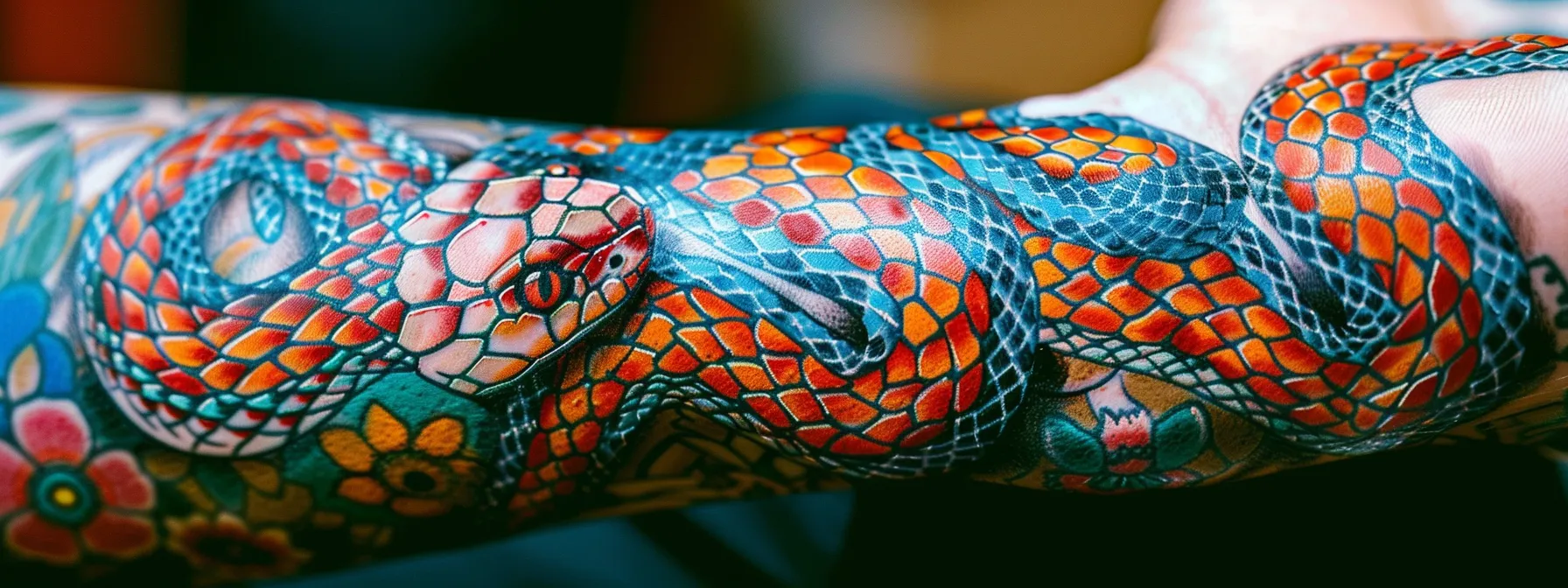
Choosing a snake tattoo involves careful consideration of various factors. The selection of snake species impacts symbolism, while placement enhances meaning. Color choices influence the tattoo’s overall message, and incorporating personal elements creates a unique design. These considerations help create a meaningful and visually appealing snake tattoo that resonates with the wearer’s intentions.
Selecting the Right Snake Species for Symbolism
Selecting the right snake species for a tattoo significantly impacts its symbolism. Cobras often represent protection and power, while pythons symbolize strength and wisdom. Rattlesnakes may convey warning or defense, and vipers can represent transformation or rebirth. The chosen species should align with the intended meaning and personal significance for the wearer, considering cultural associations and individual interpretations.
Placement Ideas to Enhance Meaning
Placement enhances the meaning of snake tattoos, with each body location offering unique symbolism. Arm placements often represent personal strength or protection, while back designs can symbolize hidden wisdom or guarding against unseen threats. Thigh tattoos may embody transformation or sensuality, and chest placements near the heart can signify emotional rebirth or courage. The choice of placement should align with the tattoo’s intended meaning and the wearer’s personal significance.
Color Choices and Their Impact on Symbolism
Color choices in snake tattoos significantly impact their symbolism and overall aesthetic. Black and gray designs often convey mystery or wisdom, while vibrant colors like red or green can represent passion or renewal. Blue snake tattoos may symbolize calmness or transformation, and gold or yellow designs often signify prosperity or divine wisdom. The selection of colors should align with the intended meaning of the tattoo and complement the wearer’s skin tone for optimal visual appeal.
Incorporating Personal Elements Into Your Design
Incorporating personal elements into a snake tattoo design enhances its uniqueness and emotional significance. Tattoo artists can integrate birthstones, zodiac symbols, or meaningful dates into the snake’s scales or surrounding elements. Custom backgrounds or additional imagery that reflects personal experiences or cultural heritage can further personalize the design. By blending these individual touches with traditional snake symbolism, the resulting tattoo becomes a powerful representation of the wearer’s identity and life journey.
Caring for Your Snake Tattoo Post-Ink

Proper care after getting a snake tattoo is crucial for its longevity and appearance. This section covers essential aftercare tips, touch-up considerations for intricate designs, and the healing process for large tattoos. Understanding these aspects ensures optimal results and preserves the symbolism of the snake tattoo.
Essential Aftercare Tips for Longevity
Proper aftercare is essential for maintaining the longevity and vibrancy of a snake tattoo. Keeping the tattoo clean and moisturized during the healing process helps prevent infection and preserve the integrity of the design. Tattoo artists recommend following a specific aftercare routine, which typically includes gentle cleansing, applying appropriate ointments, and avoiding direct sunlight or soaking in water for the first few weeks. Adhering to these guidelines ensures optimal healing and color retention, preserving the symbolism and artistry of the snake tattoo for years to come:
- Clean the tattoo gently with unscented soap and lukewarm water
- Apply a thin layer of recommended moisturizer or tattoo aftercare product
- Avoid scratching or picking at the tattoo as it heals
- Protect the tattoo from direct sunlight and excessive moisture
- Follow the tattoo artist’s specific aftercare instructions
Touch-Up Considerations for Detailed Designs
Detailed snake tattoo designs often require touch-ups to maintain their intricate features and vibrant colors. As the tattoo heals and ages, fine lines and small details may fade or blur, necessitating periodic touch-up sessions. Tattoo artists recommend scheduling touch-ups every few years, depending on factors such as skin type, sun exposure, and aftercare practices. These sessions help preserve the snake tattoo’s symbolism and visual impact, ensuring that scales, patterns, and subtle shading remain crisp and defined:
| Touch-Up Aspect | Frequency | Importance |
|---|---|---|
| Fine Line Work | Every 2-3 years | Maintains clarity of snake details |
| Color Refreshing | Every 3-5 years | Preserves vibrancy of snake design |
| Shading Touch-Ups | As needed | Enhances depth and dimension |
Understanding the Healing Process of Large Tattoos
Large snake tattoos require extended healing periods due to the extensive area of skin affected. The healing process typically spans several weeks, with initial scabbing and peeling occurring within the first 7-14 days. Proper aftercare is crucial during this time to prevent infection and ensure optimal color retention. Tattoo artists often recommend a staged approach to aftercare for large pieces, focusing on different sections as they heal to maintain the integrity of the entire design.
Conclusion
Snake tattoos embody rich symbolism rooted in ancient cultures, mythology, and personal interpretations. These designs represent transformation, wisdom, protection, and duality, offering wearers a powerful means of self-expression. The diverse meanings associated with snake tattoos, coupled with various design options and placement considerations, allow individuals to create deeply personal and visually striking body art. Understanding the historical significance, cultural variations, and proper aftercare ensures that snake tattoos remain meaningful and vibrant, serving as enduring symbols of personal growth and identity.


















